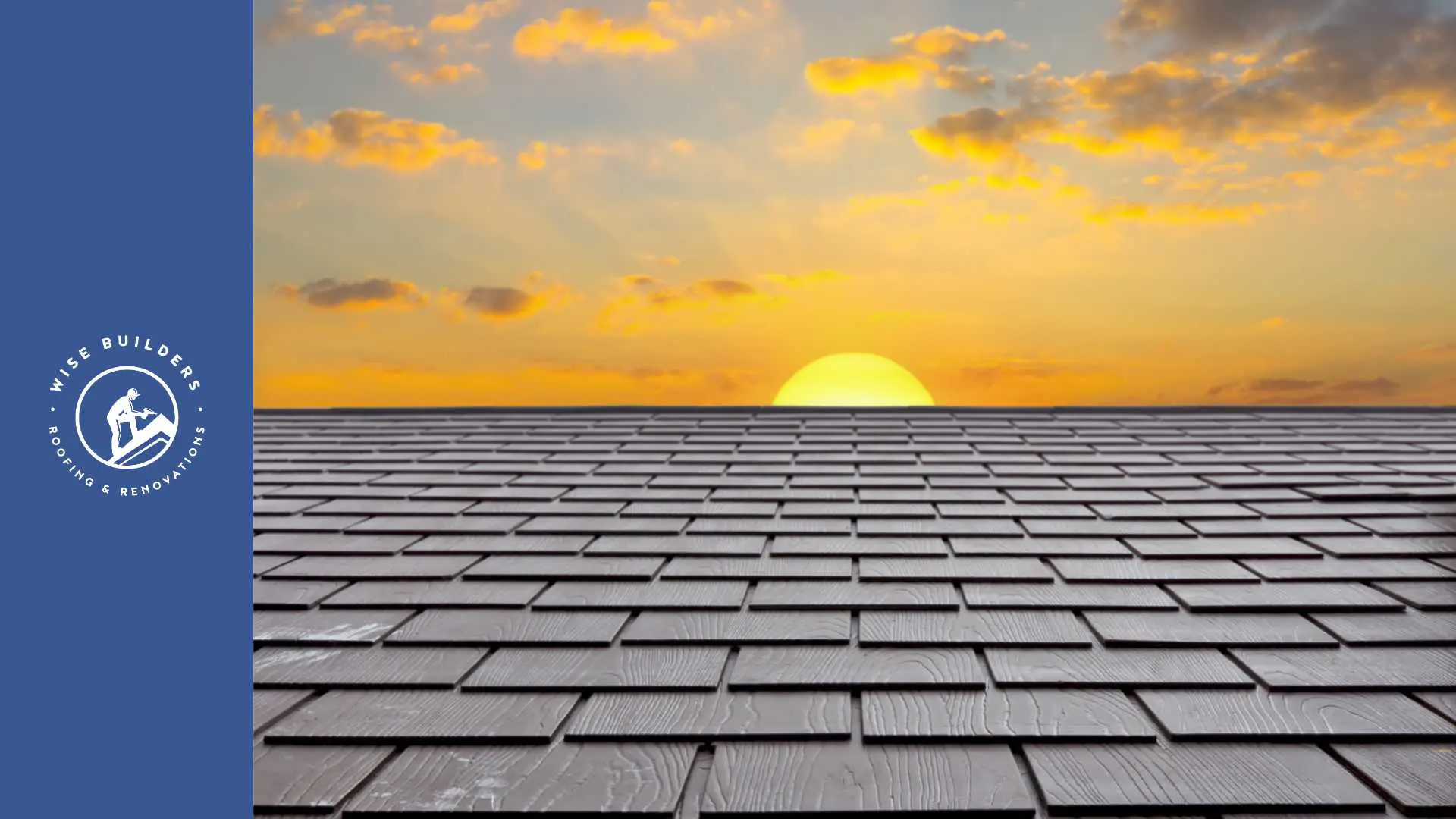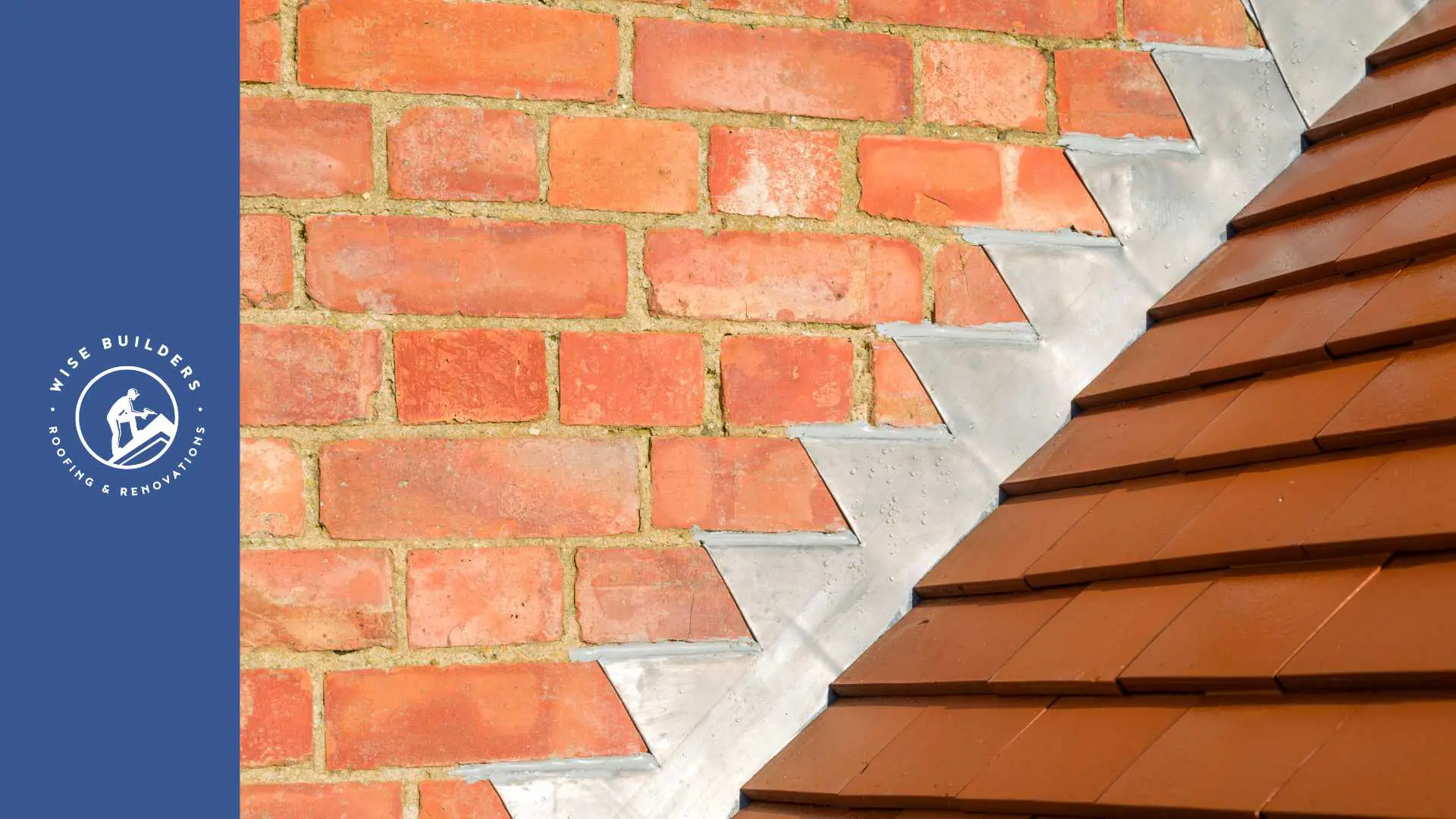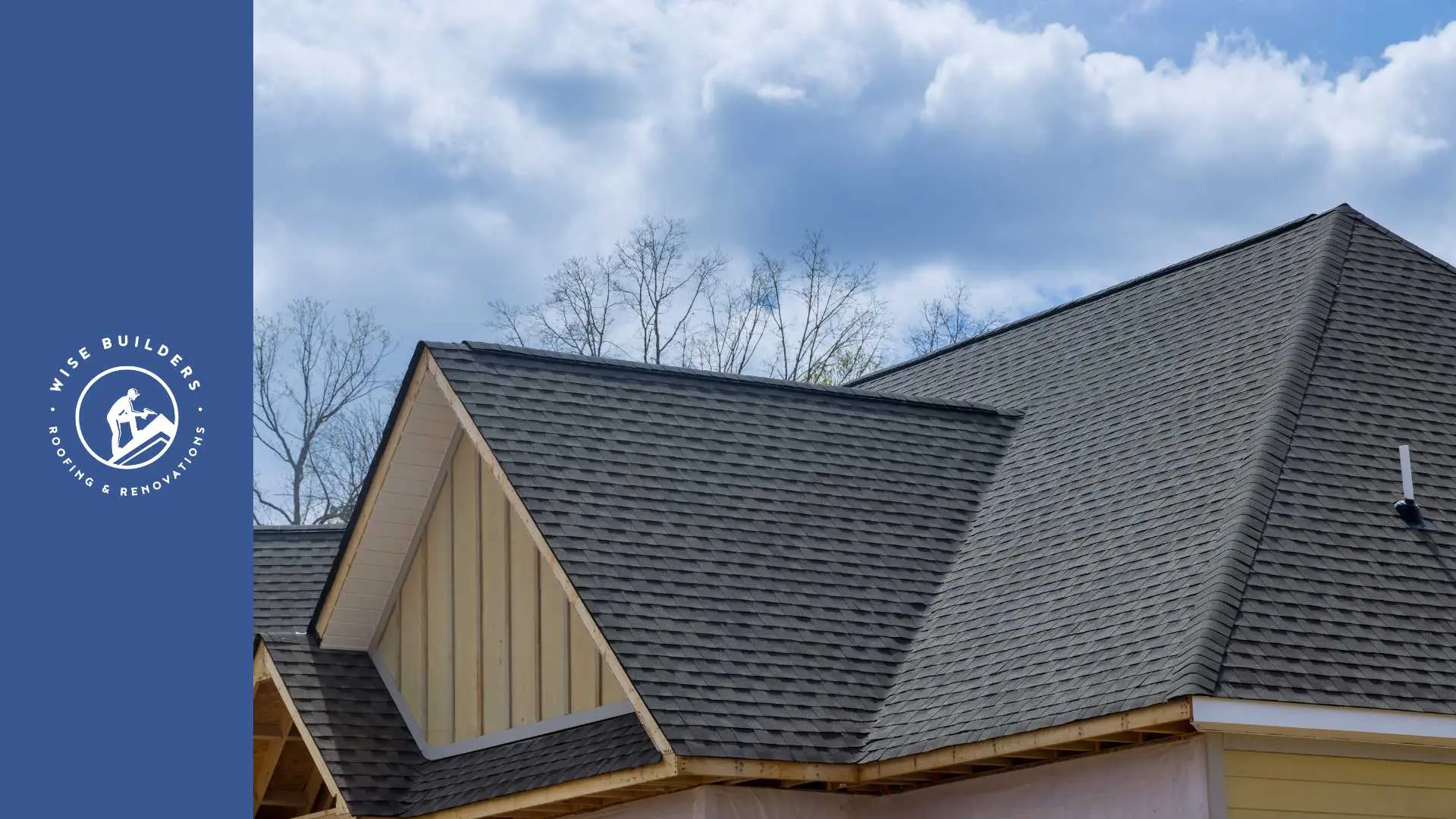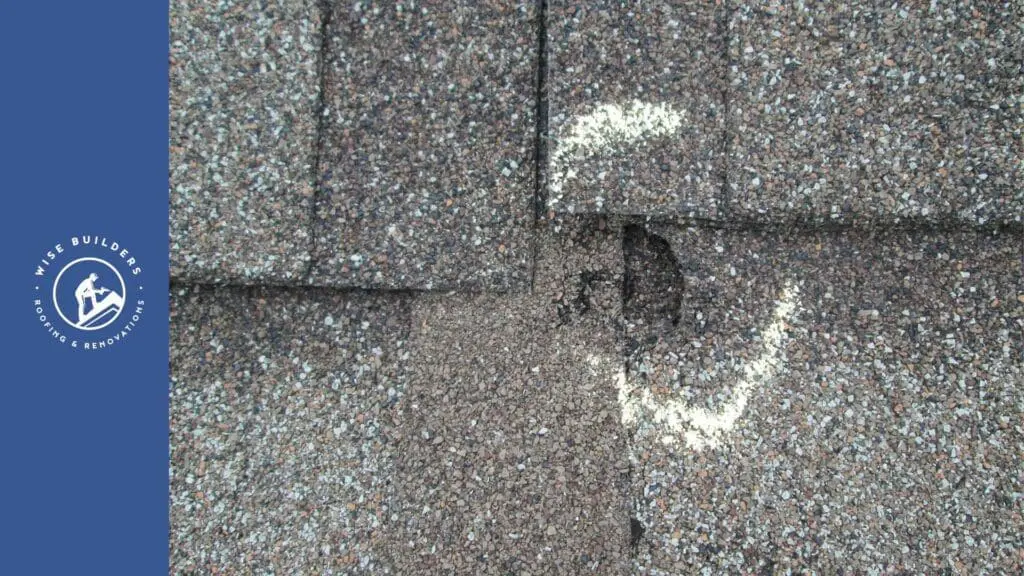
Key Highlights
- Hailstorms can cause significant damage to roofs, often requiring professional repairs or even full replacements.
- Identifying hail damage involves looking for dents, granule loss in asphalt shingles, cracks, and examining gutters for signs of impact.
- Roof damage caused by hail storms can vary greatly depending on several factors such as the size of the hail, wind speed, roof material, and roof slope. Different roof materials may react differently to hail damage, with asphalt shingles showing different signs compared to wood shingles. It is crucial to understand the effects of roof damage from hail in order to accurately assess and address any issues that may arise.
- After a hailstorm, taking immediate steps like assessing damage and temporarily protecting the roof is crucial.
- Hiring a professional roofing contractor is essential for accurate damage assessment, insurance claim assistance, and ensuring proper repairs or replacement.
- Understanding your insurance policy and coverage for hail damage is vital for a smoother claims process.
Introduction
Hailstorms can be a homeowner’s nightmare, leaving behind a trail of damage, especially to roofs. Hail damage often necessitates immediate attention and can lead to costly repairs. Understanding the extent of hail damage, navigating insurance claims, and finding the right professional help are crucial steps in dealing with a hail-damaged roof. This comprehensive guide offers expert tips to help homeowners effectively handle the aftermath of a hailstorm.
Understanding Hail Damage on Roofs
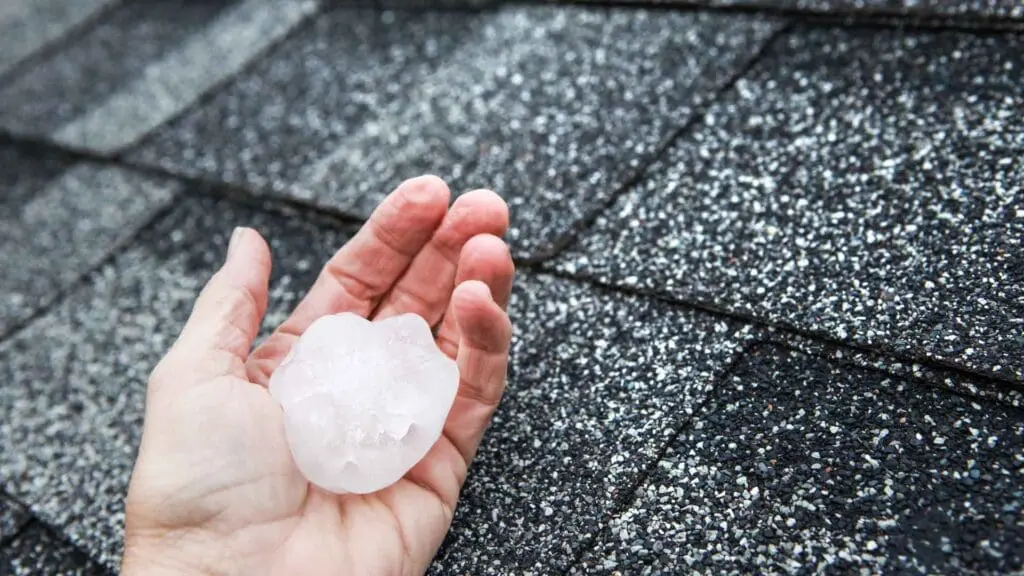
Hailstorms can wreak havoc on roofs, leaving behind a trail of damage that might not be immediately obvious. Asphalt shingles, a popular roofing material, are particularly vulnerable to hail impacts.
The extent of the damage depends on factors like the size and density of the hail, wind speed, and the age and condition of the roof. Recognizing the signs of hail damage is crucial for timely repairs and preventing further damage.
The Impact of Hail on Different Roofing Materials
Different roofing materials react differently to hail impact. Asphalt shingles, while common and cost-effective, are more susceptible to damage, especially from larger hailstones. Impacts can cause bruising, cracking, and granule loss, weakening the shingle’s integrity and exposing the roof to leaks.
Metal roofs, on the other hand, are known for their durability and hail resistance. While they might show dents from large hailstones, they are less likely to crack or break. However, severe hailstorms with wind-driven hailstones can still cause significant damage to metal roofs.
It’s important to note that even small hailstones can cause damage, especially with repeated exposure. Regular roof inspections after a hailstorm, regardless of the roofing material, are essential for identifying any potential issues.
Identifying the Signs of Hail Damage
Identifying hail damage on a roof might require a closer look, as some signs are subtle and not easily visible from the ground. Granule loss, indicated by small black granules accumulating in gutters or downspouts, is a common indicator of hail damage, particularly in asphalt shingle roofs.
Other signs include:
- Dents or bruises on roof shingles: These might appear as circular marks with a darker color than the surrounding shingles.
- Cracks in shingles: Hairline cracks or larger fractures, often radiating from the point of impact.
- Damaged flashing: Flashing around vents, chimneys, or skylights may be dented or torn.
Examining the roof for these signs is essential, but for a thorough assessment, it’s recommended to consult a professional roofing contractor.
Immediate Steps to Take After Hail Damage
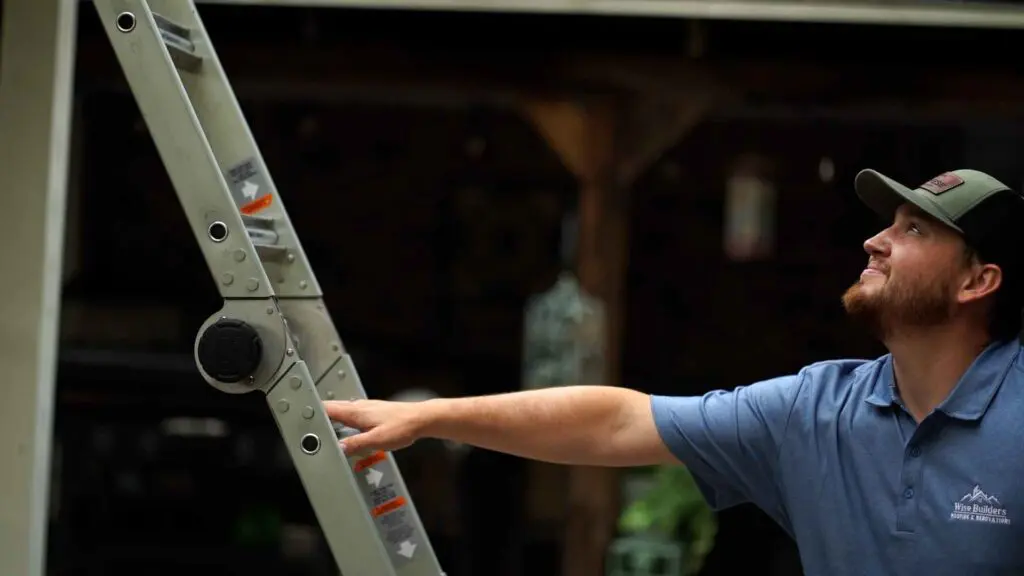
After a hailstorm, taking immediate action can help mitigate further damage and ensure your safety. First and foremost, assess the damage from the ground without attempting to climb onto the roof, as it could be unstable.
Next, contact your insurance company to file a claim and document the damage by taking photographs and videos. If you suspect leaks, place buckets under any dripping water and cover damaged areas with tarps or plywood to prevent further damage. Finally, contact a reputable roofing contractor for a professional inspection and estimate for repairs.
Assessing the Extent of Damage Safely
While it’s natural to want to inspect the roof yourself, it’s crucial to prioritize safety. Assessing hail damage from the ground is the safest approach, keeping a safe distance from any power lines or debris.
Look for obvious signs like missing or damaged shingles, dents in gutters or downspouts, and any visible damage to vents or flashing. However, remember that many signs of hail damage might be hidden from plain sight.
That’s why it’s crucial to engage a professional roofing contractor. They have the expertise, safety equipment, and trained eye to thoroughly assess the extent of damage, identify potential hidden damage, and provide an accurate evaluation of the repairs needed.
Protecting Your Roof from Further Damage
Once you’ve contacted your insurance company, focus on preventing further damage before the professional inspection. While temporary, these measures can be crucial in mitigating water damage and additional repairs.
- Cover Exposed Areas: Use tarps or heavy-duty plastic sheeting to cover any areas with missing or damaged shingles. Secure them with weights like bricks or sandbags to prevent them from blowing away in the wind.
- Tarp Leaks: Place buckets strategically beneath any leaks to catch dripping water and prevent further damage. Replace buckets as they fill.
- Clear Debris: Remove any debris, such as branches or loose shingles, that could pose a safety hazard or obstruct water flow.
- Remember, these are temporary fixes. Don’t attempt major repairs yourself, as it’s best left to professionals.
Professional Roof Inspection for Hail Damage
While a visual inspection from the ground can reveal some signs of hail damage, it’s essential to have a professional roofing contractor conduct a thorough inspection. They can accurately assess the damage, identify potential hidden issues, and provide an expert opinion on whether the roof needs repairs or a complete replacement.
A professional inspection is crucial for filing an insurance claim as well. Insurance companies rely on detailed reports from qualified roofing contractors to determine the extent of the damage and approve claims.
Why It’s Crucial to Hire a Professional
Dealing with insurance claims can be complex and time-consuming. A professional roofing contractor has experience in navigating the insurance process and can provide valuable assistance in filing a claim.
Their professional assessment of the damage, complete with photographs, reports, and detailed estimates, adds credibility to your claim and increases the likelihood of approval. They understand the intricacies of insurance policies and can effectively communicate the extent of the damage and the necessary repairs, ensuring you receive fair compensation.
Moreover, a professional contractor can identify hidden damage that might be missed during a visual inspection, ensuring all legitimate repair costs are included in your claim.
What to Expect During a Professional Roof Inspection
During a professional roof inspection, the contractor will thoroughly examine all aspects of the roof, including shingles, flashing, vents, gutters, and downspouts. They will look for signs of hail damage, such as dents, cracks, granule loss, and any underlying structural issues.
Following the inspection, the contractor will provide a detailed report outlining their findings, which includes photographs and descriptions of the damage. They will explain the severity of the damage and provide recommendations for repairs or replacement.
This report is essential when filing an insurance claim, as it provides evidence of the damage and supports your request for compensation. The contractor will work directly with your insurance company, ensuring all necessary information is provided for a seamless claim process.
Repair vs. Replacement: Making the Right Decision
Once the extent of hail damage is determined, the decision of whether to repair or replace the roof arises. This crucial decision depends on various factors, including the severity of the damage, the age and condition of the roof, and budget considerations.
Minor hail damage, like a few damaged shingles or dents, can often be repaired. However, extensive damage, widespread granule loss, or damage to the roof’s structural integrity might warrant a complete roof replacement.
Factors Affecting the Decision to Repair or Replace
The decision to repair or replace a hail-damaged roof hinges on several key factors. The amount and type of damage are primary considerations. Severe damage, such as widespread shingle fracture, extensive granule loss, or structural damage, often necessitates a replacement.
The age of the roof plays a crucial role as well. A roof nearing the end of its lifespan might be more cost-effective to replace entirely, even with minor hail damage. Repairing an old roof provides a temporary solution, and a complete replacement might be needed soon.
Other factors include the roof’s overall condition, the presence of leaks, and the homeowner’s budget and long-term plans for the property. Consulting with a reputable roofing contractor can help weigh these factors and make an informed decision.
Wise Builders Roofing and Renovations Approach to Roof Restoration
Wise Builders Roofing and Renovations understands the stress and disruption a hail-damaged roof brings to homeowners. Their approach is centered around providing exceptional customer service, quality workmanship, and peace of mind.
They prioritize customer communication, ensuring homeowners are informed throughout the entire process, from the initial inspection to the completion of the project. Their team of experienced roofing professionals uses high-quality materials and industry best practices to deliver durable and aesthetically pleasing results.
Wise Builders is committed to making the roof restoration process as smooth as possible. They handle all aspects, including insurance claims assistance, ensuring minimal disruption to the homeowner’s daily life and maximizing customer satisfaction.
Conclusion
In conclusion, dealing with hail damage on your roof requires prompt action and expert assessment. Understanding the impact of hail on different roofing materials is crucial in deciding between repair and replacement. Professional roof inspections are essential for accurately evaluating the extent of damage. Wise Builders Roofing and Renovations offer skilled services to restore your roof effectively. Don’t overlook minor damages, as they can escalate into more significant issues if neglected. Contact Wise Builders Roofing and Renovations for a thorough inspection and guidance on insurance claims. Protect your home with timely and quality roof restoration solutions.
Cracks in the shingles
One of the most visible signs of hail damage to your roof is cracks in the shingles. These cracks can vary in size and severity depending on the size of the hail and the angle of impact. Small cracks might appear as hairline fractures on the surface of the shingle, while larger cracks can extend through the entire shingle, potentially exposing the underlayment beneath.
Hail impact can cause two types of cracks in shingles: radial cracks, which radiate outwards from the point of impact, and concentric cracks, which form in a circular pattern around the impact point. These cracks weaken the integrity of the shingle, making it more susceptible to leaks and further damage from wind or rain.
During a roof inspection, a professional contractor will carefully examine the shingles for any cracks, determining their extent and impact on the roof’s overall health. They will use this information to recommend the appropriate course of action, whether it’s replacing damaged shingles or opting for a complete roof replacement.
Cracks in the shingles
Cracks in your shingles are a clear indication of storm damage, particularly from hail. While some cracks are readily visible to the naked eye, others might be more subtle and require a closer inspection. These cracks can occur on any part of the shingle, including the edges, corners, or the center, depending on the impact point and size of the hailstone.
The presence of cracks, regardless of size, compromises the water-shedding ability of the shingle. They allow rainwater to seep beneath the shingle, potentially leading to leaks, rot, and mold growth, compromising the structural integrity of your roof and home.
Identifying and addressing shingle cracks promptly is crucial to prevent further damage and costly repairs in the future. If you suspect hail damage to your roof, don’t hesitate to contact a reputable roofing contractor for a thorough inspection and professional assessment.
Cracks in the shingles
Shingle cracks, often a direct result of hailstorms, are more than just an aesthetic issue – they are a significant sign of storm damage that demands attention. Ignoring these cracks can lead to a cascade of problems, from leaks and water damage to mold infestation and structural damage, turning a minor issue into a major expense.
While hail is a common culprit for shingle cracks, other factors, such as falling debris, extreme temperature fluctuations, and even improper installation, can contribute to this type of damage. Regular roof inspections, especially after severe weather events, are crucial for detecting and addressing these cracks before they escalate into more significant problems.
A professional roofing contractor can accurately assess the severity of shingle cracks and determine the best course of action. Whether it involves replacing individual shingles or recommending a partial or complete roof replacement, their expertise ensures your roof’s integrity and protects your home.
Frequently Asked Questions
Can minor hail damage lead to bigger problems if left unattended?
Yes, even minor hail damage can escalate into major problems if left unaddressed. Minor cracks or granule loss can compromise the roof’s integrity, leading to leaks, water damage, and potential mold growth, creating costly repairs for the homeowner.
What is the process for filing an insurance claim for hail damage with Wise Builders Roofing and Renovations?
Wise Builders Roofing and Renovations simplifies the insurance claim process for hail damage. After their inspection, they provide a detailed report for your insurance provider, assisting throughout the process to ensure you receive proper coverage for repairs or replacement.

